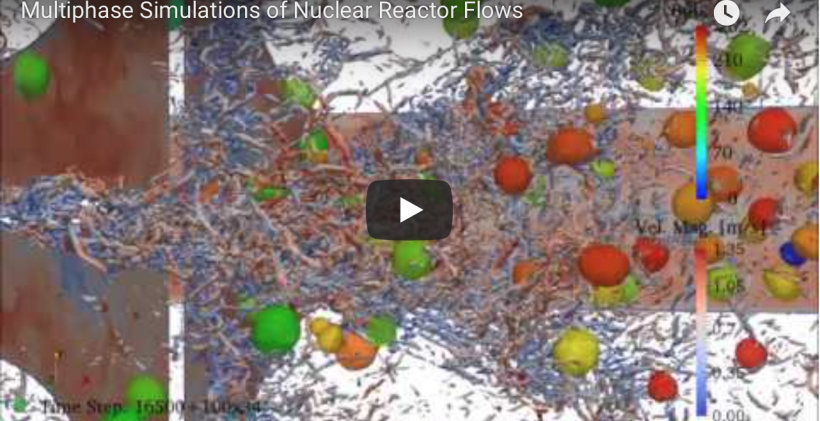Credit:
Dr. Jun Fang, Argonne Leadership Computing Facility
Prof. Igor A. Bolotnov, North Carolina State University
The water is utilized as both coolant and neutron moderator in light water nuclear reactors (LWRs), where the vapor-water two-phase flow plays an crucial role in both reactor economics/efficiency and safety. However, due to the related extreme operation conditions and measurement difficulties, the high-fidelity two-phase flow data is very unlimited for LWRs, which hinders the advancement of reactor design to make it safer and more efficient.
Thanks to the rapid growth of computing power, direct numerical simulation (DNS) has been enjoying a renewed interest in investigating challenging engineering flow problems. A combination between DNS and level set interface tracking method can provide an unique opportunity to study the related flows based on first principles calculations. The state-of-the-art computing facilities at Argonne National Laboratory (ANL) have been helping unlock this great potential. The presented simulation was carried out on BlueGene/Q Mira platform sitting at ANL with 65,536 cores granted through 2016 ALCC DOE-funded program. It shows the bubbly flow through a subchannel of pressurized water reactor core. The vapor bubbles are tracked over the simulation by a novel bubble tracking method which enables the collection of detailed data concerning bubble behavior pattern. Besides bubbles, one can also see the massive vortex structures induced by the spacer and mixing vanes which is intended to promote the turbulence intensity, and thus the convective heat removal performance.
